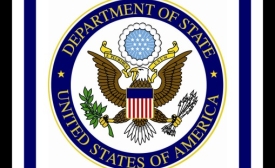cve

Philip Seib breaks down the U.S. State Department's latest report.

The "Peer 2 Peer (P2P): Challenging Extremism" project, launched in spring 2015, is based on the premise that empowering student "experts" in reaching their peers was a critical strategy in efforts to combat extremist propaganda.
The Obama Administration has announced a new communications effort to counteract the “messaging” of ISIS. The new “Center for Global Engagement,” to be located at the State Department, will be charged with “counter-messaging” ISIS (ISIL) communications. The task of the center can be simply stated: to persuade those who might follow ISIS or other terrorist groups that following them is a very wrong idea.
A panel of outside experts from Silicon Valley and the private sector has completed a skeptical review — still not public — about U.S. online efforts against ISIS, according to an article in The Washington Post. Their timely review underscores a harsh reality: The United States and its allies have not devoted the time, attention and resources necessary to countering the ideology that drives organizations like ISIS and al-Qaida.
The Islamic State of Iraq and Syria, or ISIS, is a new kind of threat facing the world today. ISIS takes advantage of their huge social media audience to post narratives of radicalization and brutality, to terrorize people, and to spread their philosophy to attract supporters worldwide. Thus, a new form of terror via cyber space, or “terrorism 2.0,” has emerged.
“They [Congress] tend to view… efforts to influence civilians outside an area of conflict as Public Diplomacy, the responsibility of the Department of State or Broadcasting Board of Governors.” By contrast, “We [at US Special Operations Command] believe there is a complementary role for the Department of Defense in this space which acknowledges the need for a civilian lead, but allows DOD to pursue appropriate missions, such as counter-recruitment and reducing the flow of foreign fighters,” he wrote.
Cohen suggested that despite the terrorist group’s comprehensive social media presence, it’s realistic for the U.S.to destroy it digitally. Specifically, he argued that the objective should be to marginalize the terrorists and push them to the periphery of the Internet.







